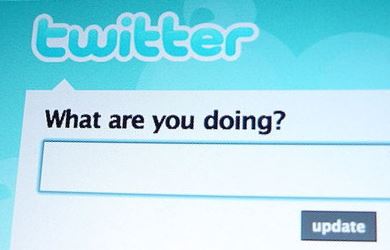Apps & Software
Why Twitter’s Earnings Will Likely Hammer the Stock
Published:
Last Updated:
If there were ever a time to sell into strength, it would be today with Twitter (NYSE:TWTR). Twitter is a case of a company that suffers from its own publicity. In terms of association with celebrities, importance of specific social media posts and even sparking political revolutions, Twitter beats Facebook. But the numbers just don’t work out.
Facebook only became decently profitable in 2013 when average revenue per user began to take off. Facebook’s monthly active users reached 1.4 billion in 2014, which was only a 13% increase compared to the year before, but its average revenue per user exploded in 2014 by almost 40%. By contrast, Twitter actually had bigger monthly active user growth, now up to 288 million, but revenue per user is about half as much at $4.86 per user if you divide 2014 revenue by total users. Facebook’s is $9.45.
So not only does Facebook have nearly 5x the amount of users that Twitter has. Its per user value is nearly twice as much as Twitter’s. Together that accounts for Facebook’s much higher revenue by a factor of nearly 9 last year. It is that economy of scale that Twitter must meet in order to become consistently profitable. The trouble is, it just isn’t happening.
The dissonance between expectation and reality is palpable with Twitter, despite the fact that official expectations are quite low for upcoming earnings. This is the tragedy of the way Twitter is set up to soak up news and yet be less profitable. The bottom line is that Facebook is used by groups of friends who actually know one another, at least minimally. People who know one another are more likely to keep talking for longer, which means more ad revenue per user. Groups of people on Twitter do not necessarily know one another. They just follow one another in a nonreciprocal “follow” exchange. They are therefore less likely to stay on Twitter, simply because they are not necessarily friends.
In the simplest terms, becoming “friends” on Facebook is a reciprocal exchange. It must be accepted. This keeps circles more tightly knit and talking more for longer periods on the social media platform, and therefore contains more value per user. To follow someone on Twitter or to be followed requires no reciprocation at all, which means groups of followers more than likely do not know one another, making a more celebrity-based platform and less of an interpersonal friendship one.
In turn, and paradoxically, this leads to Twitter seeing more news mentions and being more active in popular culture because anyone can follow any famous personality by clicking a button. A tweet by a news personality can be picked up by anyone and any outlet, whereas a Facebook post, notwithstanding the “like” feature on a public page which is not reciprocal, is more likely to be picked up only by a smaller circle, with Facebook posts generally being much longer and detailed than a Tweet.
This creates the paradox of Facebook posts being less picked up on mass media but being more valuable and containing more content in terms of individual users, but Twitter garnering most of the exciting attention despite posts being less valuable.
Usually, low expectations tend to lead to a bounce post earnings as the chances of those expectations being beaten rise. However, in Twitter’s case, things look quite gloomy indeed. Analysts are so focused on the naming of a new CEO that they seem to have totally given up on bottom line numbers.
Without a concrete way to raise revenue per user, Twitter will continue to lose money every quarter in the face of its darling status as a newsmaker. General market conditions are not the best these days either to say the least, so even a modest beat by Twitter probably won’t generate much of a bounce. If there was ever a time to sell into strength, Twitter’s 4.5% rise presents a good opportunity to exit positions in the event that earnings sour moods by the close.
Retirement planning doesn’t have to feel overwhelming. The key is finding expert guidance—and SmartAsset’s simple quiz makes it easier than ever for you to connect with a vetted financial advisor.
Here’s how it works:
Why wait? Start building the retirement you’ve always dreamed of. Click here to get started today!
Thank you for reading! Have some feedback for us?
Contact the 24/7 Wall St. editorial team.